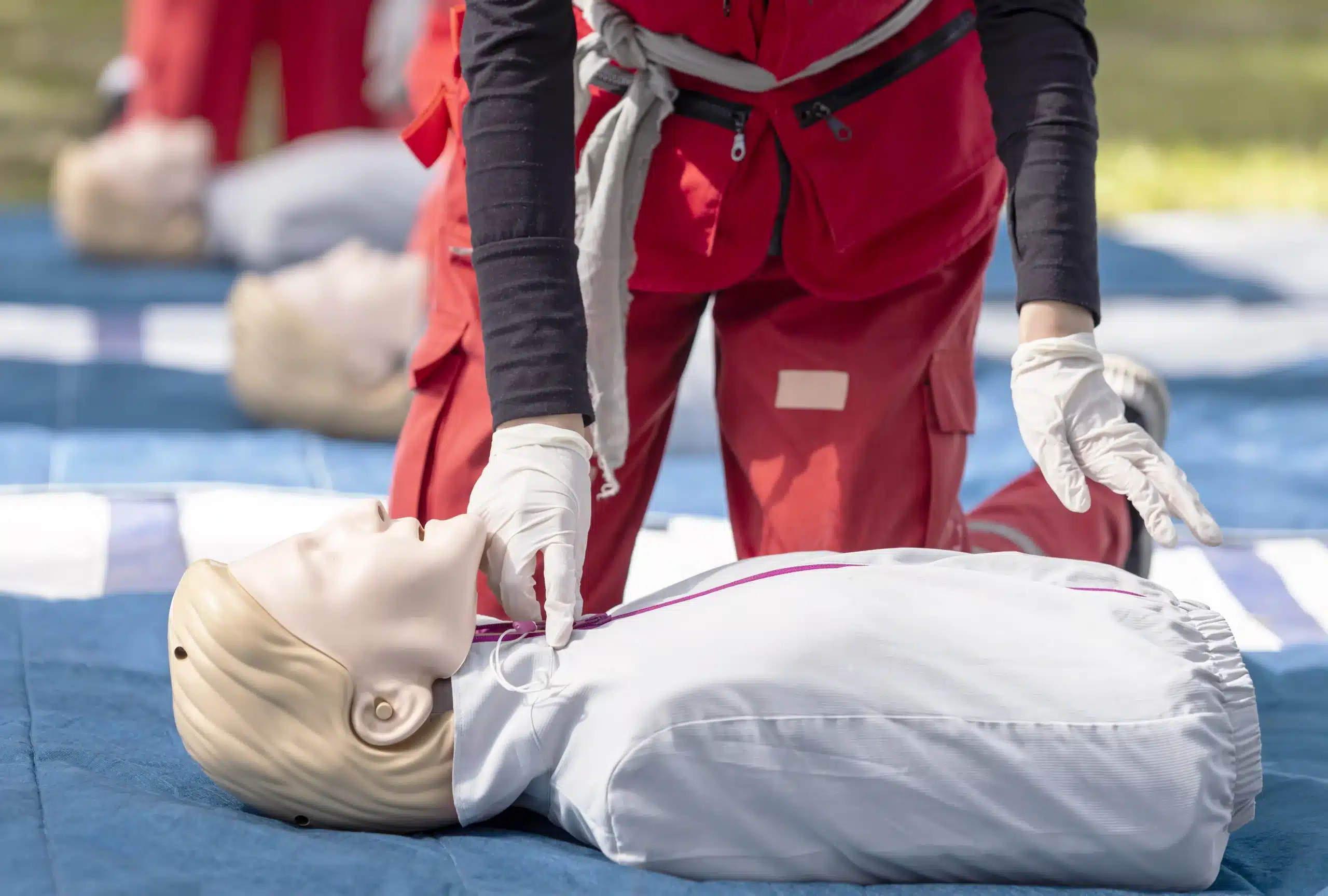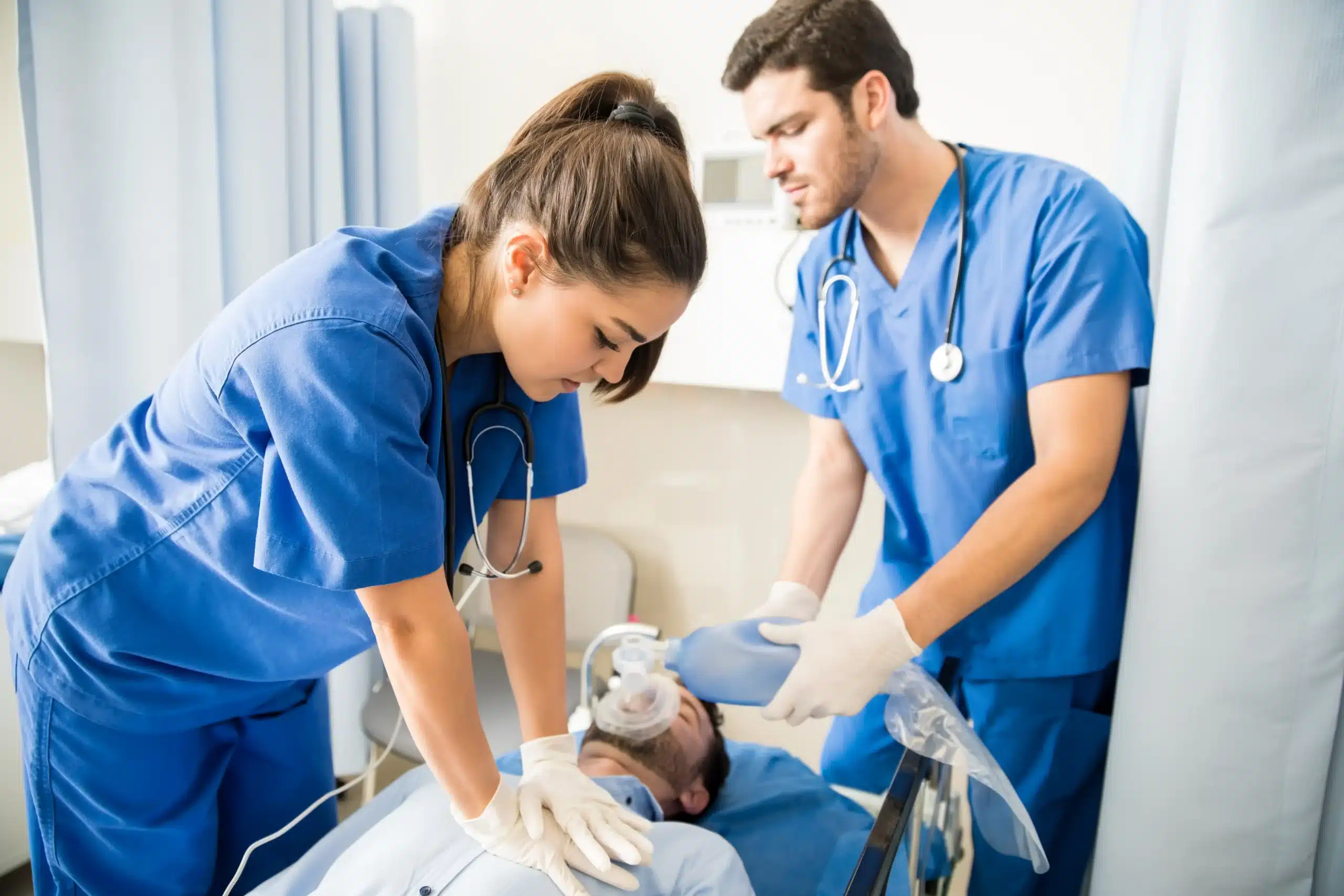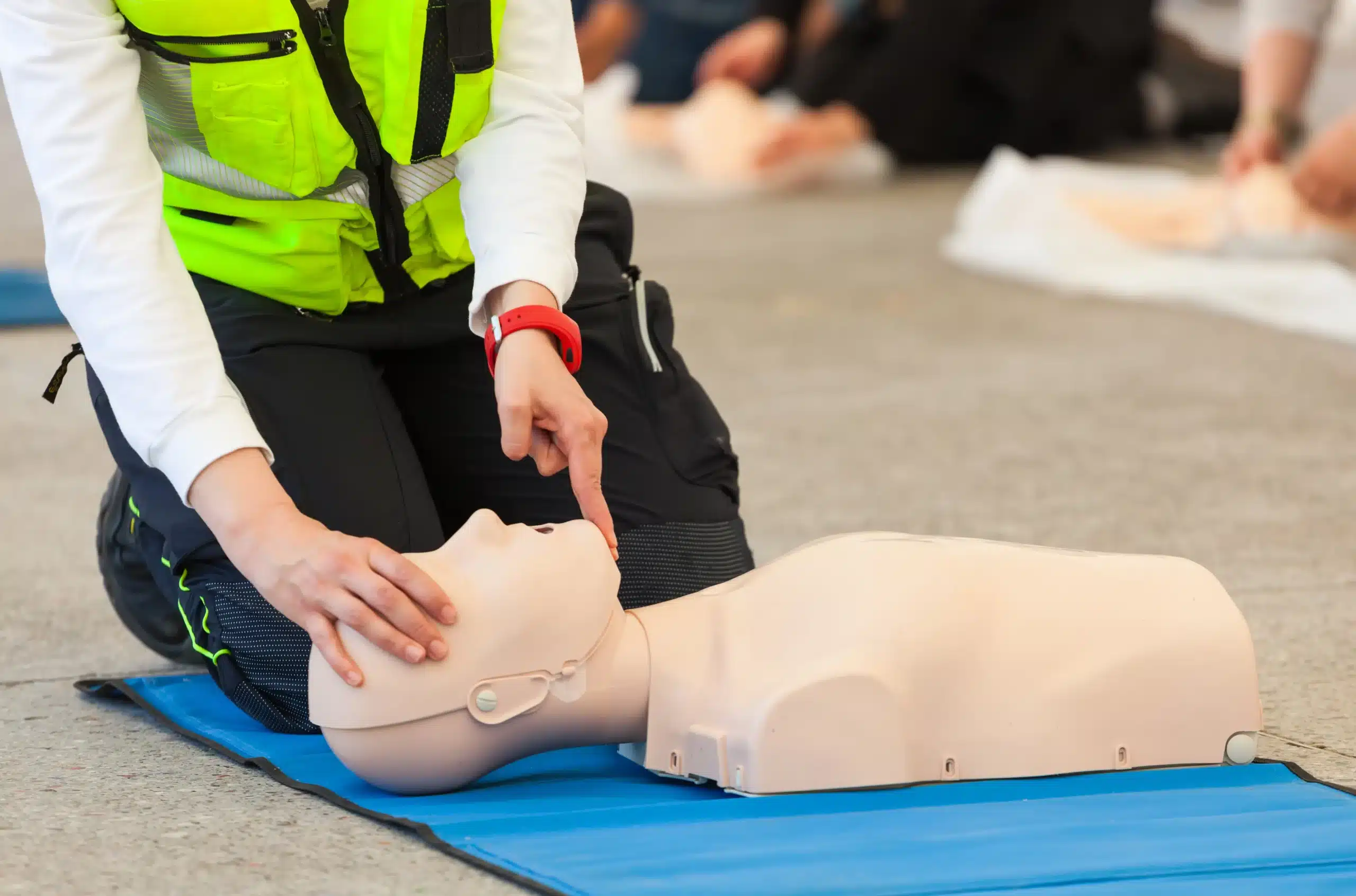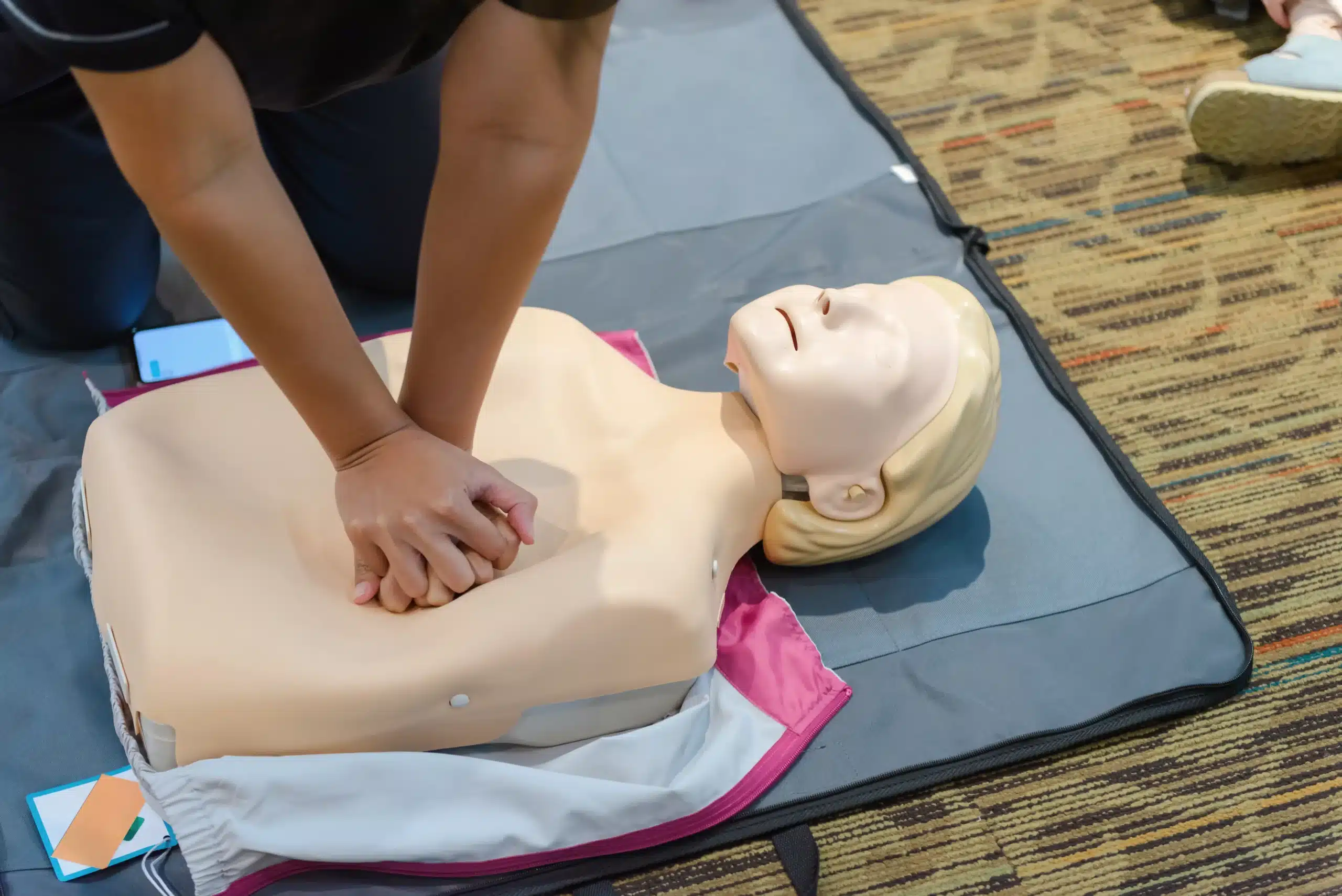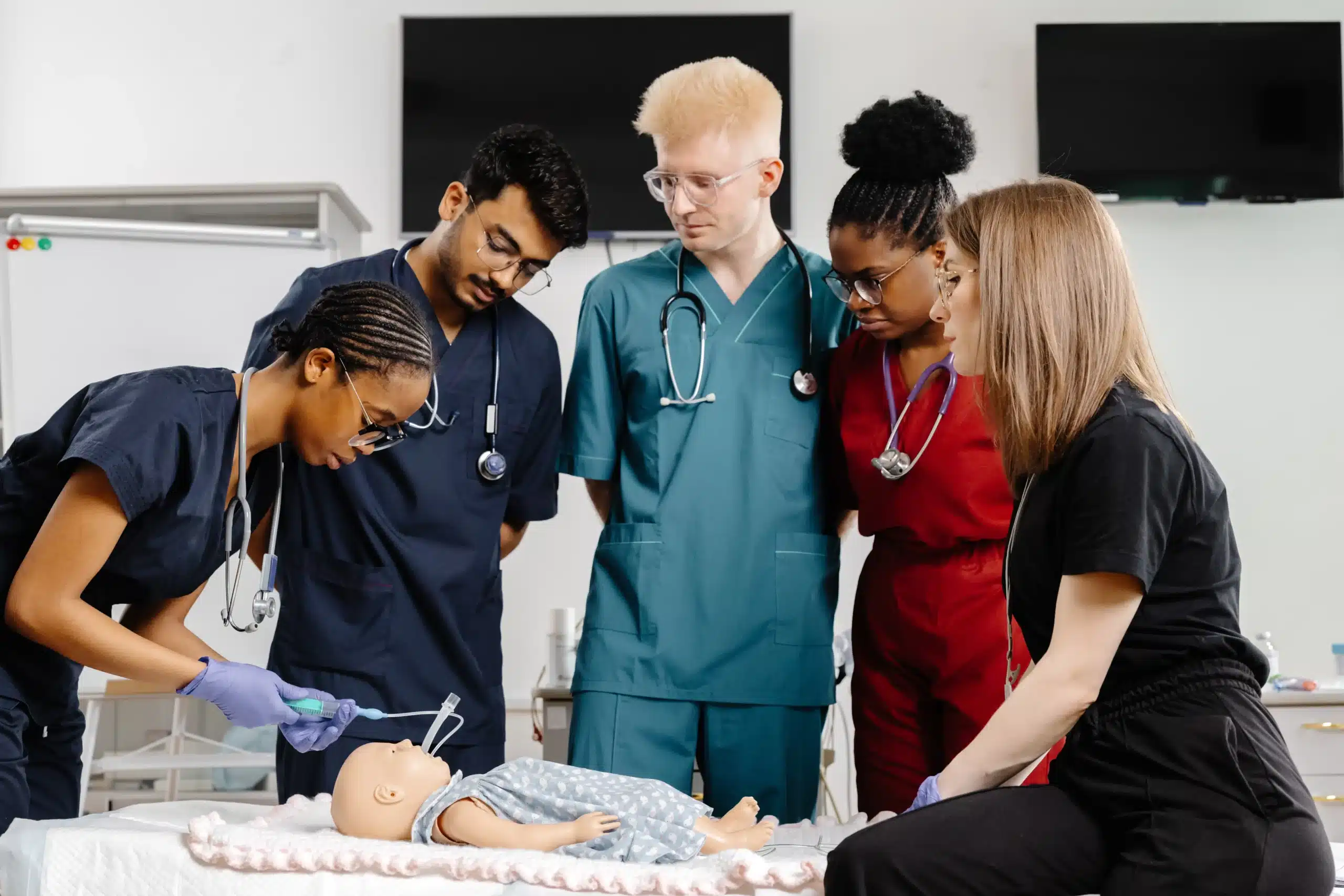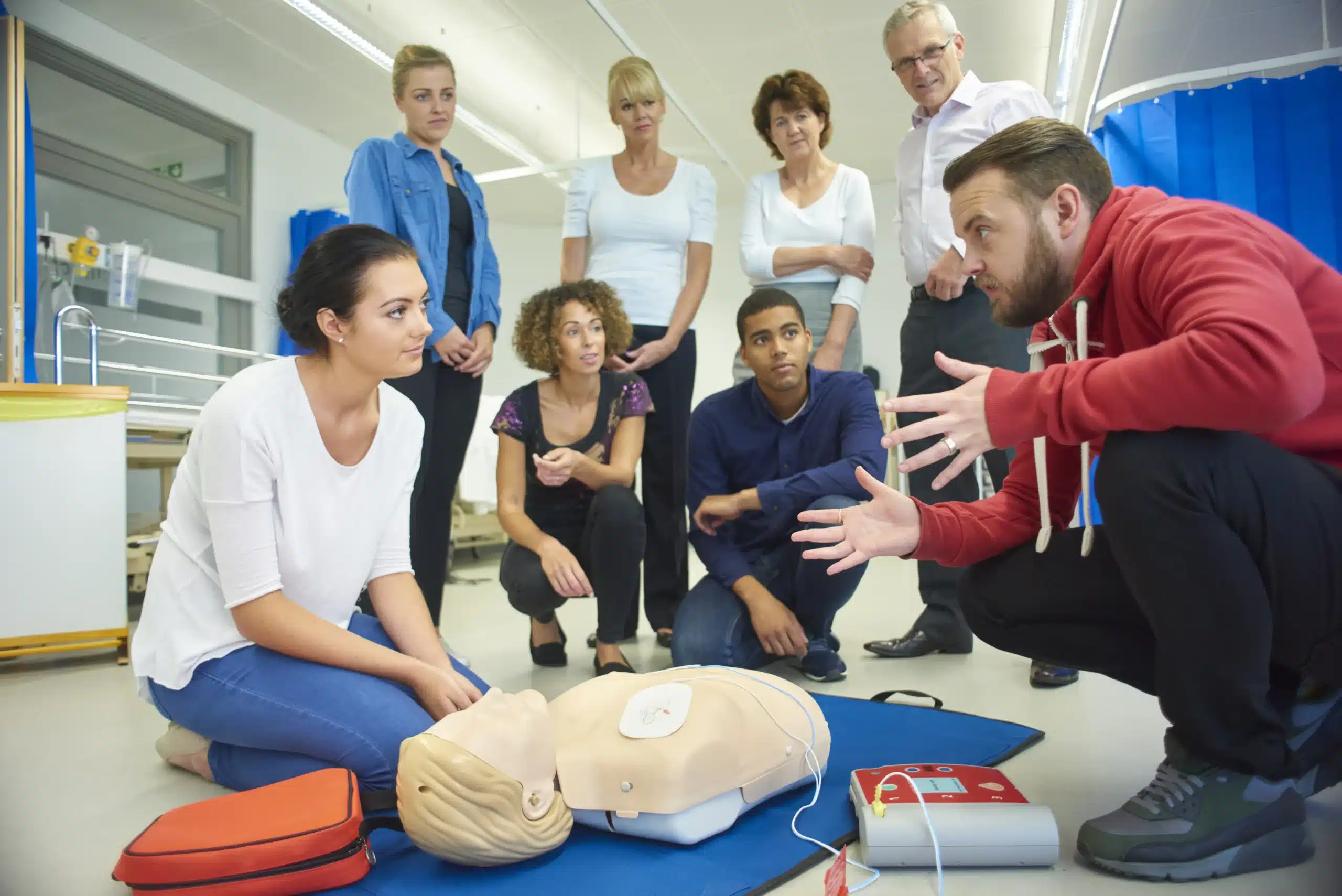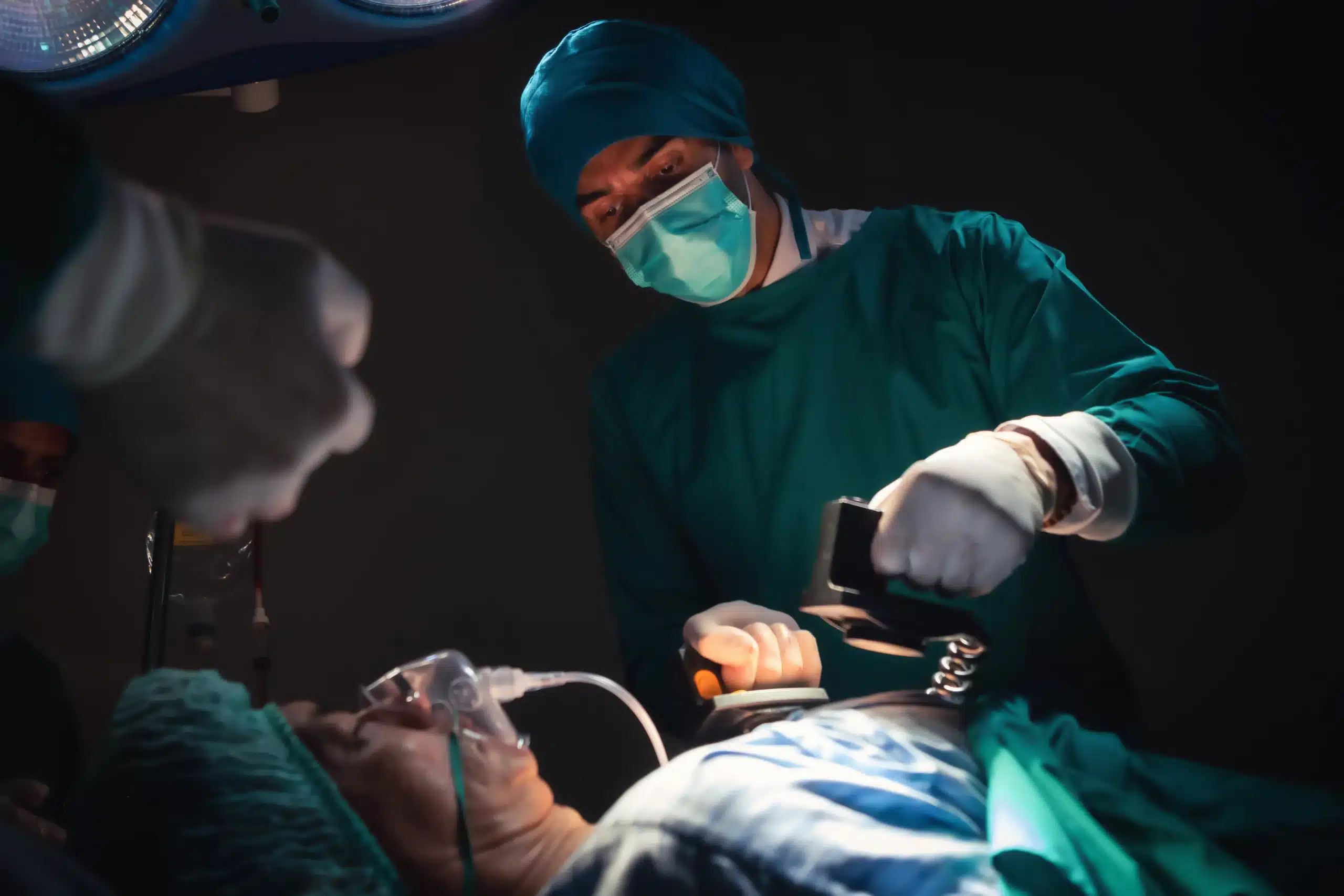Empowering yourself with life-saving skills is an incredible asset. Basic Life Support (BLS) training provides the knowledge and confidence to respond effectively in medical emergencies. This article serves as your complete guide to understanding and obtaining BLS certification. We’ll cover the importance of BLS, who should consider getting certified, and how to find “BLS classes near me.” We’ll also explore the different types of BLS courses available, break down the typical class structure and topics covered, and discuss the costs and preparation involved. Whether you’re pursuing a career in healthcare or simply want to be prepared for the unexpected, this guide will help you every step of the way.
Key Takeaways
- BLS certification empowers you to act: It provides the essential skills to respond effectively during life-threatening emergencies, making a real difference before professional help arrives. Find a course format—in-person, blended, or online with in-person skills assessment—that works best for you.
- Select a reputable training provider: Ensure your BLS certification meets professional standards by choosing an accredited provider like the AHA or Red Cross. Consider cost, location, and reviews when selecting a course.
- Prepare for a successful learning experience: Set yourself up for success by gathering required materials, familiarizing yourself with basic BLS concepts, and ensuring you’re physically and mentally ready for the training.
What is BLS?
Definition and Importance
Basic Life Support (BLS) certification equips individuals with the skills to respond to medical emergencies like cardiac arrest, respiratory distress, and choking. It’s a vital credential, proving someone can provide immediate, potentially life-saving care. BLS training emphasizes early intervention, covering essential techniques such as CPR, recognizing the signs of a heart attack or stroke, and using an AED. These interventions can significantly improve a person’s chances of survival while waiting for professional medical help. BLS differs from first aid in its focus on life-threatening conditions, making it a crucial skill set for anyone in a position to respond to such emergencies. For a comprehensive list of courses, see our CPR class directory.
Who Needs BLS Certification?
While healthcare providers like doctors, nurses, and EMTs routinely obtain BLS certification, it’s also highly relevant for a broader range of professionals. Teachers, coaches, lifeguards, and childcare providers often find themselves in situations where they might need to administer BLS. Other professionals who benefit from BLS training include those in the fitness industry, such as personal trainers, as well as those working in high-risk environments like construction sites. Even if not strictly required for your job, having BLS certification can provide peace of mind, knowing you can confidently respond to emergencies and potentially save a life. CPR CPR offers a variety of convenient and affordable BLS classes in Northern California.
Find BLS Classes Near You
Finding the right BLS class depends on your learning style and schedule. Let’s explore the different options available: in-person, online, and blended learning. Each format has its own advantages, so understanding the differences can help you make the best choice.
In-Person Classes
In-person BLS certification courses offer hands-on training and direct interaction with instructors. This format is ideal for those who learn best in a traditional classroom setting and value personalized feedback. You’ll practice skills on mannequins and receive real-time guidance, ensuring you master the techniques. In-person classes also provide opportunities to connect with other healthcare professionals. Safety Training Seminars offers in-person classes throughout Northern California, making it convenient to find a class near you.
Online BLS Courses
While the convenience of online learning is appealing, it’s important to understand the limitations when it comes to BLS certification. The American Heart Association (AHA) requires an in-person skills assessment component for their
Blended Learning
Blended learning offers a practical compromise, combining the flexibility of online learning with essential hands-on practice. You can work through the cognitive portion of the course at your own pace online, then attend an in-person skills session to demonstrate your proficiency. This format is particularly helpful for those with busy schedules. It ensures you get the benefits of both online and in-person learning, meeting the requirements for BLS certification while accommodating your individual needs. Safety Training Seminars offers blended learning options, allowing you to choose the format that best fits your lifestyle.
Choose a Reputable BLS Training Provider
Finding the right BLS training provider is crucial for a valuable learning experience. Here’s how to find a program that meets your needs:
Use Online Search Tools
Start your search online using keywords like “BLS classes near me” or “BLS certification [your city].” This CPR class directory may also be helpful. A quick search can uncover numerous training providers in your area. Look for providers that offer American Heart Association (AHA) approved BLS certification, as this is often a requirement for healthcare professionals and ensures the training meets the highest standards.
Check Local Healthcare Facilities
Hospitals, clinics, and other healthcare facilities often conduct their own BLS training programs or partner with reputable providers. Contacting these facilities directly can provide you with a list of trusted options. It’s important to remember that BLS certification isn’t a one-time thing. Look for providers who emphasize ongoing training and skill development—staying up-to-date is vital for any healthcare provider. Consider exploring the American Heart Association’s BLS course for comprehensive training.
Verify Accreditation and Certification
Before enrolling in a BLS class, confirm that the training provider is accredited by a recognized organization like the AHA. AHA-approved certification is the gold standard, often required by employers in the healthcare field. This ensures that the course content and instructors meet stringent quality standards. You can often verify a provider’s credentials directly on the AHA website. This step is essential to receive a valid and recognized certification. For a streamlined certification process, look into RQI classes.
Read Reviews and Testimonials
Online reviews and testimonials offer valuable insights into a BLS training program’s quality. Look for reviews that specifically mention the quality of instruction, hands-on training, and the overall learning experience. Websites like Yelp and Google Reviews can be excellent resources for finding honest feedback from past students. This can give you a better sense of what to expect from a particular provider. Safety Training Seminars offers a low-price guarantee and convenient training options. Reach out through our contact page to learn more.
What Happens in a BLS Class?
BLS certification focuses on providing high-quality CPR for adults, children, and infants. You’ll also learn how to relieve choking and use an AED. What can you expect during your BLS training? Let’s break down the typical class flow.
Course Duration and Structure
BLS classes usually take a few hours to complete, depending on the format and training provider. Some courses offer a blended learning approach, combining online learning with in-person skills practice and testing. Others are entirely in-person. This flexibility lets you choose the learning style that best fits your schedule and preferences. For example, our BLS certification courses offer several scheduling options.
Key Topics Covered
BLS courses cover core life-saving techniques. You’ll learn how to recognize life-threatening emergencies like heart attacks and strokes. The curriculum also emphasizes high-quality chest compressions, delivering proper ventilation techniques (rescue breaths), and the early use of an automated external defibrillator (AED). Many courses, like those offered by the American Heart Association, also include training on teamwork and communication. These skills are critical for effective resuscitation in any environment. Check out our course directory to find a class near you.
Hands-on Practice
Hands-on practice is a crucial part of BLS training. You’ll work with realistic manikins to practice chest compressions, rescue breaths, and AED use. This immersive experience builds your muscle memory and confidence, preparing you to respond effectively in real-life emergencies. Instructors provide feedback and guidance, ensuring you master the necessary skills. This practice is essential for developing the speed and accuracy needed to perform CPR effectively. Our RQI classes offer ample opportunity for hands-on training.
Skills Assessment and Testing
At the end of the course, you’ll demonstrate your skills through a practical assessment. You’ll also complete a written exam to test your knowledge of BLS principles and procedures. Successful completion earns you your BLS certification, typically valid for two years. You’ll then need to take a renewal course to stay up-to-date. We offer a low-price guarantee on all our courses. Contact us with any questions.
How Much Do BLS Classes Cost?
Okay, let’s talk about the cost of BLS classes. It’s a common question, and understandably so. Everyone wants to find quality training that fits their budget.
Average Price Range
BLS classes typically cost around $75, though prices can vary. For example, CPR Certification Brooklyn offers AHA-certified BLS classes for about that price, which gives you a general idea of the range. Remember, this is just an average; your local prices might be a bit higher or lower. Safety Training Seminars offers competitive pricing in Northern California, so check out our website for more information.
Factors Affecting Cost
Several things influence the price of a BLS class. The format of the training plays a big role. Online BLS courses sometimes differ in price from in-person classes. Also, consider your learning style and schedule. A blended learning approach (part online, part in-person) might be more convenient, but it could also affect the price. The American Red Cross offers a variety of formats, so explore what works best for you. Location also matters. BLS classes in major metropolitan areas might be pricier than those in smaller towns.
Discounts and Promotions
Keep an eye out for discounts! Many organizations, like the Red Cross, offer promotions that can make BLS training more affordable. You can sometimes find deals on training materials, too. Check if your chosen provider has any current discounts or if your employer offers any reimbursement programs. Every little bit helps! CPR CPR’s low price guarantee is another great way to save. We’re committed to providing high-quality training at competitive prices. Contact us to learn more about our current offers and how we can help you get BLS certified without breaking the bank.
Get BLS Certified
Getting your BLS certification is straightforward. It involves registering for a course, completing the training, and passing an exam. Let’s break down the process:
Steps to Certification
-
Find a course: Locate a BLS course near you. Safety Training Seminars offers a variety of convenient BLS classes throughout Northern California. Our Northern California CPR directory can also help you find other reputable training providers in the area.
-
Register and prepare: Once you find a class, register and complete any pre-course work. This might include reading materials or watching videos. Check with your chosen provider for their specific requirements.
-
Attend and participate: BLS courses typically involve classroom instruction, demonstrations, and hands-on practice. Active participation is key to mastering the skills.
-
Pass the exam: After completing the course, you’ll take a written and practical exam to demonstrate your BLS proficiency.
Certification Validity and Renewal
BLS certifications are typically valid for two years. To stay current and maintain your skills, you’ll need to take a recertification course as your certification nears expiration. Safety Training Seminars offers convenient RQI classes for efficient recertification. Check our low price guarantee. For more information about renewal options and maintaining your BLS certification, contact us.
Prepare for Your BLS Class
Getting ready for your BLS class involves more than just signing up. A little prep work goes a long way in making sure you get the most out of your training. Here’s how to prepare:
Required Materials
Some BLS providers include all the necessary materials in the course fee. Others require students to purchase a BLS manual or pocket mask before the first class. Check with your chosen provider—like Safety Training Seminars—to see what materials, if any, you need to bring. Many EMS programs require students to have BLS certification before enrollment, so double-check those requirements too.
Pre-course Study
While not mandatory, pre-course study can significantly improve your learning experience. Familiarizing yourself with basic BLS information beforehand allows you to grasp concepts faster during the class. Review the BLS provider handbook and consider taking some practice exams. This will help you identify areas where you might need extra focus during the training. Safety Training Seminars offers resources like our RQI classes to help you refresh your skills and knowledge.
Physical and Mental Preparation
BLS training involves physical activity, including performing CPR on mannequins. Make sure you’re physically up to the task. Being well-rested and focused is equally important for absorbing the information effectively. Remember, BLS is a demanding field, so maintaining a healthy work-life balance is crucial for both learning and applying these life-saving techniques. Regularly practicing your BLS skills will help you maintain proficiency and confidence. If you’re looking for affordable, high-quality BLS training in Northern California, contact us at Safety Training Seminars. We serve San Francisco, San Jose, Oakland, Sacramento, Berkeley, and Concord, CA. Check out our low price guarantee.
Benefits of Local BLS Classes
Choosing a local BLS class offers distinct advantages you might not find with online or out-of-area options. These benefits can significantly impact your learning experience and preparedness for real-life emergencies.
Immediate Support and Feedback
Local BLS classes provide the invaluable opportunity to interact directly with certified instructors. This means you can receive immediate feedback on your technique and ask questions as they arise. Hands-on practice is a crucial part of BLS training, and having an instructor there to correct your form, offer tips, and provide personalized guidance can significantly boost your confidence and skill retention. This real-time support is often lacking in online courses, where feedback can be delayed or less specific. For a truly immersive and supportive learning experience, consider our BLS certification courses in Northern California.
Networking Opportunities
Think of a local BLS class as a chance to connect with other professionals in your community. You’ll meet people from diverse healthcare backgrounds, fellow community members interested in first aid, and perhaps even future colleagues. These local connections can be a valuable resource for sharing knowledge, discussing best practices, and staying updated on local healthcare initiatives. It’s a great way to expand your professional network and build relationships with like-minded individuals. Explore our Northern California CPR directory to find classes and connect with others in your area.
Community-Specific Knowledge
Emergencies can vary depending on the specific challenges and resources of a community. Local BLS training programs often incorporate community-specific scenarios and resources, making the training more relevant to your area. For example, a coastal community might include water safety protocols in their training, while a rural area might focus on farm-related accidents. This localized approach ensures you’re well-prepared to handle emergencies unique to your environment, something a generic online course might overlook. It also connects you with local resources and emergency response protocols, further enhancing your preparedness. Contact us to learn more about our community-focused BLS training programs.
Top BLS Training Providers
Finding the right BLS training provider is crucial for receiving high-quality instruction and a recognized certification. Several respected organizations offer BLS certification courses, each with its own approach and benefits. Here’s a closer look at some of the leading providers:
American Heart Association (AHA)
The American Heart Association is a trusted authority on CPR and emergency cardiovascular care. Their BLS course is designed for healthcare professionals, equipping participants with the skills to perform CPR, use an AED, and relieve choking. The AHA’s rigorous standards and focus on the latest scientific guidelines make their certification highly respected in the medical field. AHA BLS Provider cards are valid for two years.
American Red Cross
The American Red Cross is another well-known provider of BLS training. Their courses emphasize high-quality CPR and AED use, providing hands-on practice to build confidence. The Red Cross offers flexible learning options, including blended learning that combines online coursework with in-person skills sessions. This approach can be particularly helpful for busy individuals.
National Safety Council (NSC)
The National Safety Council offers BLS training focused on the latest techniques and guidelines for emergency response. Their courses cater to both healthcare professionals and the general public, ensuring everyone can access these essential lifesaving skills. The NSC emphasizes practical skills development and knowledge retention through interactive training methods.
ProTrainings
ProTrainings offers online and blended learning options for BLS certification, allowing for self-paced study. Their courses use video demonstrations and interactive quizzes to reinforce learning, making the material accessible and engaging. ProTrainings provides a two-year certification upon successful course completion.
Health & Safety Institute (HSI)
HSI provides BLS training tailored for healthcare providers and emergency responders. They offer both classroom and online options, with a strong emphasis on hands-on skills practice and real-life scenarios. HSI is known for its commitment to high-quality training and adherence to the latest guidelines in emergency care.
Safety Training Seminars
Safety Training Seminars offers comprehensive BLS training for healthcare professionals and the general public. Our courses cover essential lifesaving skills, including CPR, AED use, and choking relief. We prioritize interactive learning and hands-on practice to build confidence and prepare you to respond effectively in emergencies. We also offer the convenient and efficient American Heart Association RQI program for BLS certification. Use our Northern California CPR directory to find a class near you, and see our low price guarantee. Contact us today to learn more about our BLS training options.
Related Articles
- BLS Classes in Sacramento: A Complete Guide
- BLS Courses in Oakland: A Certification Guide
- Basic Life Support (BLS) in Berkeley CA: Top Courses
- BLS Certification Berkeley: Your 2024 Guide – San Francisco Bay Area CPR Classes
- BLS Renewal Near Me: Find the Right Course – San Francisco Bay Area CPR Classes
Frequently Asked Questions
What’s the difference between BLS and CPR? CPR (Cardiopulmonary Resuscitation) is a specific technique used within BLS (Basic Life Support). Think of BLS as the broader umbrella, encompassing CPR along with other essential skills like recognizing the signs of a heart attack, using an AED, and providing initial care for choking. BLS training gives you a more comprehensive skillset for responding to various medical emergencies.
How long does my BLS certification last, and how do I renew it? BLS certification is typically valid for two years. To renew, you’ll need to take a recertification course before your current certification expires. This ensures your skills and knowledge are up-to-date with the latest guidelines. Look for renewal courses offered by reputable providers like the American Heart Association or the American Red Cross.
Is online BLS certification enough, or is in-person training required? While online resources can be helpful for learning the cognitive aspects of BLS, hands-on training and in-person skills assessment are essential for certification. The American Heart Association requires an in-person component to ensure you can effectively perform CPR and other BLS skills in a real-life situation.
What if I have a busy schedule? Are there flexible BLS training options? Absolutely! Many providers offer blended learning, which combines online coursework with in-person skills sessions. This allows you to study the material at your own pace and then attend a shorter in-person session for hands-on practice and testing. Some providers also offer weekend or evening classes to accommodate various schedules.
How do I choose the right BLS training provider? Look for providers accredited by a recognized organization like the American Heart Association. Check reviews and testimonials to get a sense of the quality of instruction and the overall learning experience. Consider factors like location, course schedule, and cost when making your decision. Don’t hesitate to contact different providers and ask questions to find the best fit for your needs.


